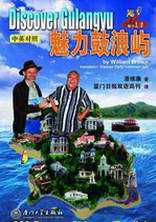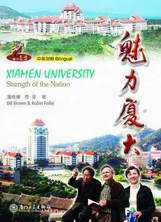![]() Click
to
Access
Click
to
Access
AMOY MAGIC SITE from
OUTSIDE China
![]() Click
to Access Amoy
Magic Site from
Click
to Access Amoy
Magic Site from
INSIDE
China ![]()
TRAVEL
LINKS
![]() Xiamen
Xiamen
![]() Gulangyu
Gulangyu
![]() Jimei
Jimei
![]() Tong'an
Tong'an
![]() Jinmen
Jinmen
![]() Zhangzhou
Zhangzhou
![]() Quanzhou
Quanzhou
![]() Wuyi
Wuyi
![]() #1Fujian
Sites!
#1Fujian
Sites!
![]() Fujian
Foto Album
Fujian
Foto Album
![]() Books
on Fujian
Books
on Fujian
![]() Readers'Letters
Readers'Letters
![]() Ningde
Ningde
![]() Zhouning
Zhouning
![]() Longyan
Longyan
![]() Sanming
Sanming
![]() Putian
Putian
![]() Bridges
Bridges
![]() Travel
Info,
Travel
Info,
![]() Hakka
Roundhouses
Hakka
Roundhouses
![]() Travel
Agents
Travel
Agents
MISC. LINKS
![]() Amoy
People!
Amoy
People! ![]()
![]() Darwin
Driving
Darwin
Driving ![]()
![]() Amoy
Tigers
Amoy
Tigers
![]() Chinese
Inventions
Chinese
Inventions
![]() Tibet
in 80 Days
Tibet
in 80 Days![]()
![]() Amoy
Vampires!
Amoy
Vampires!
![]() Dethroned!
Dethroned!
![]()
![]() Misc.Writings
Misc.Writings
![]() Latest
News
Latest
News
![]() Lord
of Opium
Lord
of Opium
![]() Back
to Main Page
Back
to Main Page
Copyright 2001-7 by Sue Brown & Dr.
Bill ![]() Order
Books
Order
Books
Note:
Please click thumbnails
for larger photos!!
![]() Amoy
Hill's Photos
Amoy
Hill's Photos![]()
Henry and Sara Beltman
Amoy
Mission, 1920-1928 (Click
thumbs for larger photos)
In 1984, Robert Schuller
Ministires published "90 Years with Uncle Henry,¡±
because Henry Beltman was Schuller's uncle! When Dr. Schuller visited
China in October and early November, 2006, he visited Xiamen,
spoke at Xiamen University, and sought out the church
Uncle Henry started. (BTW, Xiamen's 45th church
was finished in May, 2008; neighboring Quanzhou
has almost 200). Chinese versions of Schuller's books have
been published in China. You can buy them in Xiamen at Jehovah
Nissi Bookstore.
Related Links: ![]() Dr.
Schuller's China Tour.
Dr.
Schuller's China Tour. ![]() Hour
of Power in Beijing
Hour
of Power in Beijing
![]() A
Schuller Sermon mentioning Uncle Henry as "father" of Crystal
Cathedral.
A
Schuller Sermon mentioning Uncle Henry as "father" of Crystal
Cathedral.
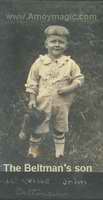 "90
Years" is hard to find; the Hills
gave me their copy. Now that Schuller Ministries has a renewed interest
in China, perhaps they'll reprint it? In the meantime, below are
Amoy-related excerpts from "Uncle Henry."
Enjoy!
"90
Years" is hard to find; the Hills
gave me their copy. Now that Schuller Ministries has a renewed interest
in China, perhaps they'll reprint it? In the meantime, below are
Amoy-related excerpts from "Uncle Henry."
Enjoy!
Blessings,
Dr. Bill
Copyright 1984 by Robert Schuller Ministries, Garden Grove
California
Chapter 16 ¡°First Impressions of Amoy Language Boys¡¯School
pp.66, 67¡°It was
an interesting experience to see the Chinese coolies competing with each
other to take our luggage and help us in our last journey to the island
of Kulangsu. The Poppens lived in a large
house on the shore. A long granite slab jetty extended into the harbor.
The water was at ebb tide. The Amoy harbor has a tide of over 20 feet.
It was a short trip from steamer to jetty on a small sampan loaded with
luggage and three persons. I was a bit concerned about the heavy load
in so small a boat on a treacherous deep-water harbor. Amoy harbor is
one of the large deep-water harbors of the world. I was given my first
lesson in traveling on a small boat with an extra heavy load. I was not
supposed to be alarmed. I was merely to sit still and watch.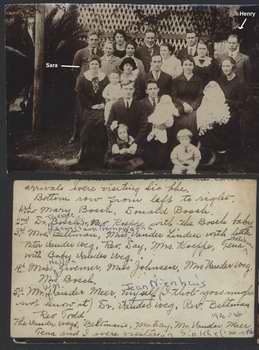
¡°It was Sunday morning when we landed. We had a hearty breakfast with the Poppens. Mrs. Poppen and Sara Helene were sisters....¡±
"...The language study was most interesting yet not easy. It was not like a Latin language. It had no grammar. It demanded practice of tones and memorizing words and phrases. It did not have an alphabet. It was a pictorial language of thousands of characters¡.¡±
TRAVELING
SHOES
pp.67, 68 ¡°Four weeks after arrival, Mr. Poppen
asked me to accompany him on one of his evangelistic tours into the country
to visit the churches and mission stations in the district assigned to
his supervision. Sincere there were no roads on which we could use vehicles,
it was a journey on foot. It was a journey of some twenty days, traveling
some 300 miles, and living on Chinese food, and spending the nights in
rooms provided by the church or mission stations. We carried a small amount
of food in one of our luggage baskets, and our required clothing in another
basket. Each of us had two baskets weighing not over sixty pounds. These
burdens were to be carried by Chinese coolies, called burden-bearers.
These men traveled with us from village to village. At times we traveled
as much as twenty miles per day, over hills and down into the valleys
and up again to the hills. The roads were mostly two or three feet wide
paths. The climing of the hills was made easier by having granite steps
placed firmly on the paths. These steps were adjusted in height and distance
to the size of the Chinese. They were mostly 5 feet 2 inches or 5 feet
3 inches; we were both six feet tall. This made hill climbing and going
down not too easy for us.
 ¡°Another
thing I learned on this first trip was that my strong American walking
shoes were no match for the Chinese grass sandals. My shoes were new when
we began our trip. When we ended, the shoes were not worth repairing.
My next trips were to be made in grass sandals. I had to have some extra
large ones made. The price per pair of sandals was about 30 Chinese pennies.
A pair of sandals would give me a minimum of 600 miles. When walking in
sandals, it was easy to stop by a stream and cool one¡¯s feet and feel
refreshed. I never traveled there again wearing shoes.¡±
¡°Another
thing I learned on this first trip was that my strong American walking
shoes were no match for the Chinese grass sandals. My shoes were new when
we began our trip. When we ended, the shoes were not worth repairing.
My next trips were to be made in grass sandals. I had to have some extra
large ones made. The price per pair of sandals was about 30 Chinese pennies.
A pair of sandals would give me a minimum of 600 miles. When walking in
sandals, it was easy to stop by a stream and cool one¡¯s feet and feel
refreshed. I never traveled there again wearing shoes.¡±
p.69 BRITISH
missionaries. ¡°All the missionaries who entered India, or any
of the near-east countries, or the Arab lands had to promise not to speak
against Great Britian [sic]. Britian rule the world in a strange sort
of manner. The missionaries to these lands entered by the grace of His
Majesty or Her Majesty, the King or Queen of Great Britian.¡±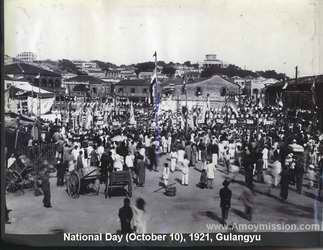
SCHOOL -THRIVE
UNDER LOCALS [See "Pioneering
Education]
p.69 ¡°My first assignment during our second year of language study was
a boys¡¯ school. It was an elementary school, directly across the narrow
walk in front of our house. I had charge of this school for the next five
years. The school thrived during these five years, due to giving the control
of the school to the local Chinese. The principal and all the teachers
were Christians, and I felt they were well qualified to take control of
the school. I kept long-distance control. When the student body increased,
I asked local Chinese to help build a larger dormitory and a larger dining
room for which the local Chinese paid. My error was that I did not ask
permission for this move from our local missionary personnel and was severely
reprimanded. This was not the last such reprimand because of the need
for progress. I felt that the Book of Acts taught us that churches and
their schools should become self-governing, self-propagating and self-sustaining.
This idea was not all acceptable by missionaries and their boards from
1920-1926. But I enjoyed the boys¡¯ school.¡±
Chapter 17
Talmage College (pp. 70,71)
¡°I had had no experience in architectural work nor building, but during
my third through my sixth years in China, I was the leading real-estate
buyer, architect and builder.
¡°The mission had a small college on the island of Kulangsu on an acre campus. It was necessary to move this college. Of course opposition arose. To live in Kulangsu was to live in a thriving, rich, wealthy community, and in touch with the whole world. Kulangsu was an island in the middle of the large Amoy harbor. It had a walk around the island which measured five miles. Many rich people lived there. They had acquired their riches in the Philippines, Dutch East Indies and Rangoon. It was estimated that four million Amoy-speaking Chinese lived in those sections of the Far East. They were successful business people. Having become wealthy, they returned to live on Kulangsu Island, protected by international treaties. Amoy was one of the larger harbors that was controlled by the British. Life was safe on this island, but our school was being crowded out of its campus.
¡°It was decided to move Talmage College to Changchow, where the mission had determined we were to live during our first term of service¡ªsix or seven years."
Note: Please send
me Beltman-related text or photos
Further Reading: Beltman, Henry, "Emancipation of Chinese Womanhood,"
Christian Intelligencer, September 1, 1926, p. 561
Help the "The Amoy Mission Project!" Please
share any relevant biographical material and photos for the website and
upcoming book. All text and photos will remain your property, and
photos will be imprinted to prevent unauthorized use.
Please
share any relevant biographical material and photos for the website and
upcoming book. All text and photos will remain your property, and
photos will be imprinted to prevent unauthorized use.
E-mail: amoybill@gmail.com
Snail Mail: Dr. William Brown
Box 1288 Xiamen University, Xiamen, Fujian PRC 361005
![]() Favorite
Fujian Sites
Favorite
Fujian Sites ![]() Fujian
Foto Album
Fujian
Foto Album ![]() Xiamen
Xiamen
![]() Gulangyu
Gulangyu
![]() Fujian
Guides
Fujian
Guides ![]() Quanzhou
Quanzhou
![]() Zhangzhou
Zhangzhou
![]() Longyan
Longyan
![]() Wuyi
Mtn
Wuyi
Mtn ![]() Ningde
Ningde
![]() Putian
Putian
![]() Sanming
Sanming
![]() Zhouning
Zhouning
![]() Taimu
Mtn.
Taimu
Mtn. ![]() Roundhouses
Roundhouses
![]() Bridges
Bridges
![]() Jiangxi
Jiangxi
![]() Guilin
Guilin
![]() Order
Books
Order
Books![]() Readers'
Letters New: Amoy
Vampires! Google
Search
Readers'
Letters New: Amoy
Vampires! Google
Search
Last Updated: October 2007
AMOY
MISSION LINKS
![]()
![]() A.M.
Main Menu
A.M.
Main Menu
![]() RCA
Miss'ry List
RCA
Miss'ry List
![]() AmoyMission-1877
AmoyMission-1877
![]() AmoyMission-1893
AmoyMission-1893
![]() Abeel,
David
Abeel,
David
![]() Beltman
Beltman
![]() Boot
Family
Boot
Family
![]() Broekema,
Ruth
Broekema,
Ruth
![]() Bruce,
Elizabeth
Bruce,
Elizabeth
![]() Burns,
Wm.
Burns,
Wm.
![]() Caldwells
Caldwells
![]() DePree
DePree
![]() Develder,
Wally
Develder,
Wally
![]() Wally's
Memoirs!
Wally's
Memoirs!
![]() Douglas,
Carstairs
Douglas,
Carstairs
![]() Doty,
Elihu
Doty,
Elihu
![]() Duryea,
Wm. Rankin
Duryea,
Wm. Rankin
![]() Esther,Joe
& Marion
Esther,Joe
& Marion
![]() Green,
Katherine
Green,
Katherine
![]() Hills,Jack
& Joann
Hills,Jack
& Joann
. ![]() Hill's
Photos.80+
Hill's
Photos.80+
..![]() Keith
H.
Keith
H.![]() Homeschool
Homeschool
![]() Hofstras
Hofstras
![]() Holkeboer,
Tena
Holkeboer,
Tena
![]() Holleman,
M.D.
Holleman,
M.D.
![]() Hope
Hospital
Hope
Hospital
![]() Johnston
Bio
Johnston
Bio
![]() Joralmans
Joralmans
![]() Karsen,
W&R
Karsen,
W&R
![]() Koeppes,
Edwin&Eliz.
Koeppes,
Edwin&Eliz.
![]() Kip,
Leonard W.
Kip,
Leonard W.
![]() Meer
Wm. Vander
Meer
Wm. Vander
![]() Morrison,
Margaret
Morrison,
Margaret
![]() Muilenbergs
Muilenbergs
![]() Neinhuis,
Jean
Neinhuis,
Jean
![]() Oltman,
M.D.
Oltman,
M.D.
![]() Ostrum,
Alvin
Ostrum,
Alvin
![]() Otte,M.D.
Otte,M.D.![]() Last
Days
Last
Days
![]() Platz,
Jessie
Platz,
Jessie
![]() Pohlman,
W. J.
Pohlman,
W. J.
![]() Poppen,
H.& D.
Poppen,
H.& D.
![]() Rapalje,
Daniel
Rapalje,
Daniel
![]() Renskers
Renskers
![]() Talmage,
J.V.N.
Talmage,
J.V.N.
![]() Talman,
Dr.
Talman,
Dr.
![]() Veenschotens
Veenschotens
. ![]() Henry
V.
Henry
V.![]() Stella
V.
Stella
V.
. ![]() Girard
V.
Girard
V.
![]() Veldman,
J.
Veldman,
J.
![]() Voskuil,
H & M
Voskuil,
H & M
![]() Walvoord
Walvoord
![]() Warnshuis,
A.L.
Warnshuis,
A.L.
![]() Zwemer,
Nellie
Zwemer,
Nellie
![]() Fuh-chau
Cemetery
Fuh-chau
Cemetery
![]() City
of Springs
City
of Springs
(Quanzhou, 1902!!)
![]() XM
Churches
XM
Churches ![]()
![]() Church
History
Church
History ![]()
![]() Opium
Wars
Opium
Wars
![]() A.M.
Bibliography
A.M.
Bibliography
![]() YMCA
Volunteer!
YMCA
Volunteer!
![]() XICF
Fellowship
XICF
Fellowship![]()
![]() Temples
Temples![]()
![]() Mosques
Mosques
![]() Christ
in Chinese
Christ
in Chinese
Artists'
Eyes
DAILY LINKS
![]() FAQs
Questions?
FAQs
Questions?
![]() Real
Estate
Real
Estate
![]() Shopping
Shopping
![]() Maps
Maps
![]() Bookstores
Bookstores
![]() Trains
Trains
![]() Busses
Busses
![]() Car
Rental
Car
Rental
![]() Hotels
Hotels
![]() News
(CT)
News
(CT)
![]() Medical
& Dental
Medical
& Dental
![]() Expat
Groups
Expat
Groups
![]() Maids
Maids
![]() Phone
#s
Phone
#s
EDUCATION
![]() Xiamen
University
Xiamen
University
![]() XIS(Int'l
School)
XIS(Int'l
School)
![]() Study
Mandarin
Study
Mandarin
![]() CSP(China
Studies)
CSP(China
Studies)
![]() Library
Library
![]() Museums
Museums
![]() History
History
DINING ![]() Tea
Houses
Tea
Houses
![]() Restaurants
Restaurants
![]() Asian
Asian
![]() Veggie
Veggie
![]() Junk
Food
Junk
Food
![]() Chinese
Chinese
![]() Italian
Italian
![]() International
International![]()
![]() Visas
4 aliens
Visas
4 aliens
RECREATION
![]() Massage!
Massage!
![]() Beaches
Beaches
![]() Fly
Kites
Fly
Kites
![]() Sports
Sports
![]() Boardwalk
Boardwalk
![]() Parks
Parks
![]() Pets
Pets
![]() Birdwatching
Birdwatching
![]() Kung
Fu
Kung
Fu ![]() Hiking
Hiking
![]() Music
Events
Music
Events
![]() Cinema
Cinema
![]() Festival&Culture
Festival&Culture
![]() Humor&
Humor&![]() Fun
Fotos
Fun
Fotos![]()
BUSINESS
![]() Doing
Business
Doing
Business
![]() Jobs!(teach/work)
Jobs!(teach/work)
![]() Hire
Workers
Hire
Workers
![]() Foreign
Companies
Foreign
Companies
![]() CIFIT
(Trade Fair)
CIFIT
(Trade Fair)
![]() MTS(Translation)
MTS(Translation)
![]()
Back to Top
